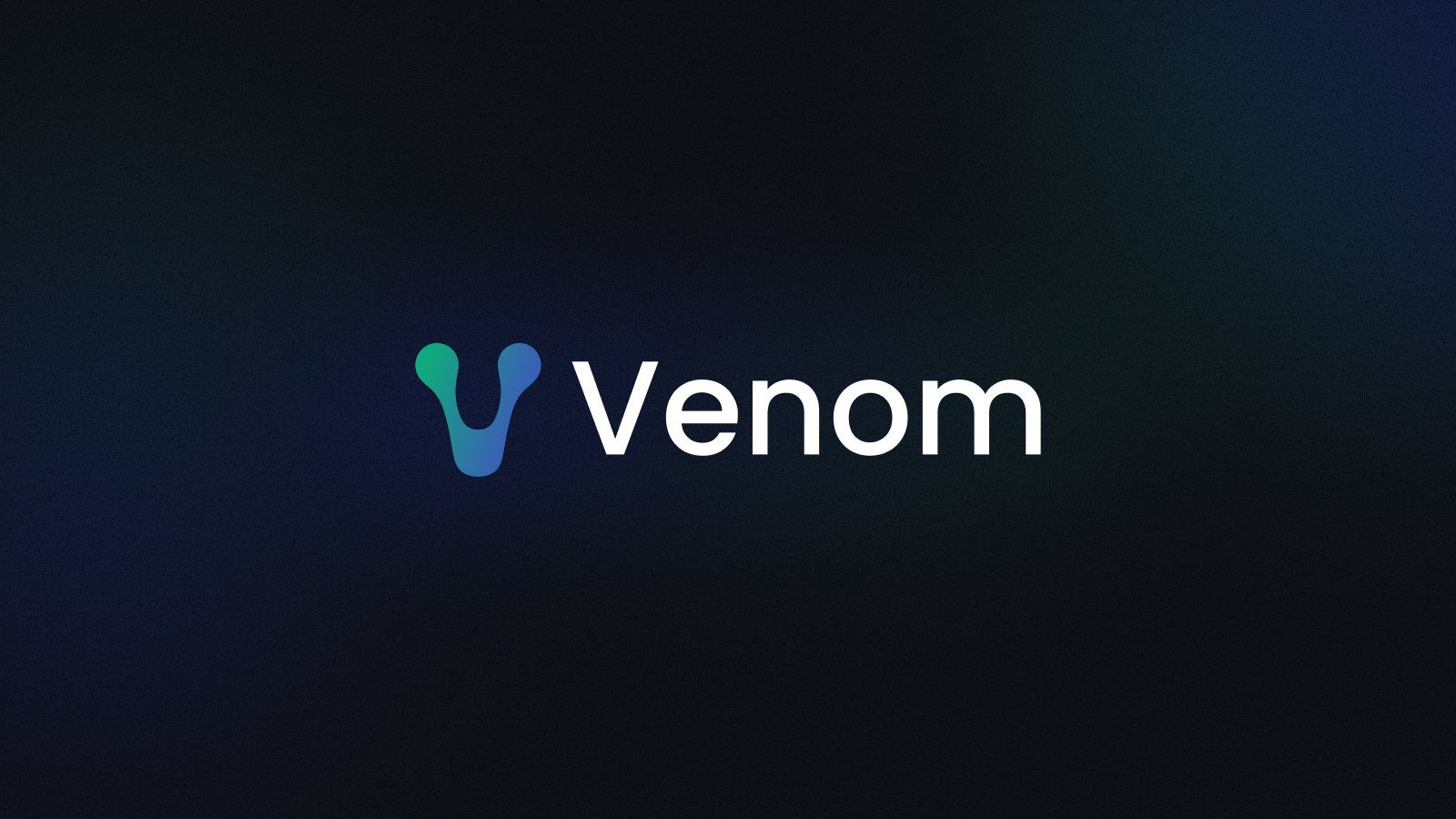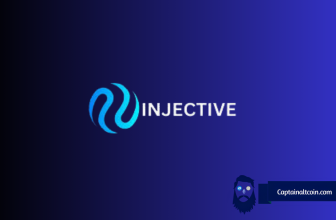
Venom Foundation is a blockchain-related firm that has received licensing from the Abu Dhabi Global Market. As a decentralized network, Venom operates under the jurisdiction of the ADGM and has the ability to issue utility tokens.
Venom Foundation is licensed to operate a blockchain by the ADGM which is compliant with international law and regulations, a financial center in Abu Dhabi, United Arab Emirates that operates as an international financial hub.
This blockchain is compliant with regulations, making it an attractive option for investors and financial services firms. Several companies have developed decentralized applications and protocols on the Venom blockchain, and it has the potential to become a bridge for the adoption of central bank digital currencies in the Middle East, North Africa, and globally.
According to the Venom Foundation, their mission is to promote the widespread adoption of blockchain technology. They offer innovative technologies and frameworks that adhere to the rule of law and create a secure environment for a broad range of users, from retail customers to institutions and sovereign nations.
What you'll learn 👉
Consensus Mechanism
Venom uses a Proof of Stake consensus type, with an initial implementation using a BFT-based consensus protocol with four phases for reaching consensus. The protocol assumes that at least ⅔ of all network validators are honest, and a collusion of more than ⅓ of validators can result in a network halt or corruption.
The Byzantine Fault Tolerance (BFT) consensus algorithm is designed to enable a distributed network to reach consensus even when some of the nodes in the network fail to respond or respond with incorrect information.
The Byzantine Generals’ Problem is the fundamental problem that BFT addresses, which is about how to ensure consensus among a group of nodes in the network when some of them are faulty or malicious. BFT is derived from this problem and aims to reduce the influence of faulty nodes by employing collective decision-making by both correct and faulty nodes.
Venom Main Features
- Venom is a blockchain platform that boasts several advantages and impressive features. One of its most notable features is its low transaction fees, with an average transaction fee of only $0.0002, which is significantly lower than other blockchain platforms.
- Additionally, Venom can handle more than 100,000 transactions per second, making it a high throughput rate platform. It is also designed to be scalable, which means it can handle even higher transaction volumes, up to 1 million transactions per second.
- Another advantage of Venom is its fast time to finality, which ranges from 0.2-0.3 seconds. This means that transactions are processed quickly and efficiently, making it an ideal platform for applications that require fast and reliable transaction processing.
Overall, Venom is a powerful blockchain platform that offers several advantages and features that make it an attractive choice for businesses and developers.
Venom Asynchronous Architecture
Venom’s architecture is designed to be asynchronous, with a dynamic sharding and a heterogeneous multi-blockchain platform. The platform utilizes a masterchain/workchain architecture to address horizontal scalability issues.
Threaded Virtual Machine (TVM)
Venom employs the Threaded Virtual Machine (TVM) to execute smart contract code, chosen for its compact code and simpler security model. To encourage widespread adoption by developers, Venom supports high-level programming languages familiar to them for writing TVM programs.
The Threaded Virtual Machine (TVM) is a virtual machine used to execute smart contract code in the Venom blockchain. It is a Turing complete machine that can execute machine-level instructions asynchronously, allowing for concurrent processing of multiple smart contracts. TVM is utilized in various blockchain platforms, including Everscale, Venom, GOSH, and TON.
Accounts on the blockchain are considered actors in TVM, and each account can only affect the state of another account by sending a message. TVM utilizes the Actor model to handle interactions between accounts, which is different from how EVM-based networks operate. TVM is a stacking virtual machine that operates data in a stack, making it more suitable to execute code written in high-level languages. It provides a highly efficient and scalable way to handle account interactions in the Venom Blockchain.
Apache TVM is an open-source machine learning compiler framework that enables machine learning engineers to optimize and run computations efficiently on any hardware backend. The Relay virtual machine is a framework that provides a dynamic execution environment that can be extended, instrumented, and integrated with other approaches like ahead-of-time compilation via a flexible extension mechanism. Serialization of an executable generated by the Relay VM compiler is a must as we may want to save the model to disk and perform inference later.
Masterchains
In Venom’s architecture, the masterchain serves as the hub of the network, collecting block proofs from various workchains and finalizing them. It validates all transactions and prevents fraudulent activities, while storing data on the network’s state, including account balances, smart contracts, and other metadata.
The masterchain is an essential component of the Venom blockchain. It acts as a layer-0 chain that facilitates communication and coordination between workchains, shardchains, and accounts. This chain is responsible for maintaining network configuration, message routing, and validator information. Additionally, it stores and distributes the latest block hashes of corresponding shardchains and the current shard configuration. The masterchain is crucial to the security of the Venom blockchain, and its validators are incentivized to act honestly and secure the network by staking their tokens. Only a limited number of validators with the largest stakes are responsible for generating new masterchain blocks, ensuring the network’s integrity.
Workchains
Workchains are blockchain-based platforms developed by Venom, serving as the backbone for the network. They can support different types of decentralized applications (dApps) and smart contracts. The workchain architecture tackles the scalability problem of regular blockchains.
It is secured by a set of global validators and is connected to the masterchain, which provides an additional layer of security. Workchains can be tailored to fit the specific needs of the application it hosts, providing greater flexibility for developers. This can lead to better performance, faster transaction processing, and improved network efficiency.
The Venom blockchain comprises two distinct networks – the Masterchain and the Basechain. The Basechain is the first layer-1 workchain for end-users, supporting dApps and executing smart contracts.
Sharchains
Shardchains, like processor cores, execute computations using their own private memory space, improving network performance by parallelizing computations between groups of validators. The Venom network starts with a single shardchain for all smart contract addresses. If transaction volume increases, the shardchain splits in two, and if transaction volume decreases, the shardchain merges back together.
These are individual partitions within the blockchain that hold information on a specific subset of accounts. The initial setup includes a single shardchain responsible for processing all transactions. However, if this shardchain becomes overloaded, it will automatically split into two new ones, ensuring that the workload is evenly distributed. This process continues until the transactions are efficiently processed by an appropriate number of shardchains, making it a fast and cost-effective solution.
Overall, Venom’s asynchronous architecture is designed to address scalability issues and improve network performance, making it a promising platform for decentralized applications and smart contracts.
Venom ecosystem
The Venom ecosystem is a hub of various tools and services designed to provide users with a seamless user experience and promote the adoption of the technology. Here are some of the base components of the Venom ecosystem:
- Venom Wallet: This is the native non-custodial multi-asset wallet of the Venom platform. It allows users to securely store, send, and receive Venom tokens and other digital assets. The wallet features an intuitive user interface and enables users to manage their assets easily.
- Venom Scanner: Similar to Etherscan, Venom Scanner is an explorer that allows users to track transactions and monitor the status of their transfers on the network. It provides real-time data on block production, transaction confirmation times, and other key metrics.
- Venom Pools: This is the staking interface of the Venom protocol. It allows users to stake their Venom tokens and earn rewards for helping to secure the network. This incentivizes users to hold and use Venom tokens, which ultimately strengthens the ecosystem.
- Venom Bridge: The cross-chain platform enabling seamless asset transfer between blockchain networks. This allows users to transfer digital assets between different blockchain networks, promoting interoperability.
- Web3World: This is a decentralized exchange that allows users to trade digital assets without the need for intermediaries. It provides a more secure and transparent way to exchange assets, reducing counterparty risk.
Each of these products was created by independent teams participating in the Developer Program, showcasing the potential for developing solutions on the Venom blockchain. This open development model allows for innovation and creativity from the community, which ultimately strengthens the ecosystem.
Overall, the Venom ecosystem provides a robust and comprehensive suite of tools and services designed to support the adoption and growth of the technology. It offers a range of features and use cases, making it a versatile and valuable addition to the blockchain landscape.
Challenges facing various blockchain networks
The Venom Foundation aims to provide a solution for scaling blockchain networks in real time by offering horizontal and vertical scalability options.
Venom and real-time scalability
Venom Blockchain is a blockchain protocol that, like many others, aims to tackle scalability challenges. To address this, there are two different approaches: horizontal scalability and vertical scalability.
Horizontal scalability involves increasing the number of nodes in a network to improve its capacity to process more transactions. Venom achieves this through a process called sharding, which partitions the network into smaller segments called shards that can process transactions in parallel.
Venom uses dynamic sharding to adjust the number of shards based on network demand, ensuring that the platform can handle large transaction volumes without compromising security or decentralization. This approach allows Venom to process up to 1 million transactions per second.
Vertical scalability, on the other hand, involves increasing the capacity of individual nodes in a network to process more transactions. This approach involves upgrading the hardware or software components of a node to improve its processing power. While vertical scalability can increase the performance of a single node, it has limitations in terms of how much it can improve the overall network’s capacity.
Other scalability challenges
However, there are several other challenges that need to be addressed, such as reliability and stability, the number of transactions that can be processed per second, cost per transaction, inability to silo user behavior, and security flaws.
To overcome these challenges, Venom Blockchain has adopted a heterogeneous multi-blockchain architectural approach to its blockchain design. This approach reduces transaction fees and solves the scalability challenge.
Venom Blockchain’s architecture comprises three layers that support parallel transaction processing, which allows it to process as many as 100,000 to 1M transactions per second (TPS). In addition, the network uses a hybrid consensus protocol that combines proof-of-stake (PoS) and Byzantine fault tolerance (BFT) algorithms to ensure fast finality.
Despite the challenges facing various blockchain networks, Venom Blockchain has a competitive advantage over other technologies in the industry due to its exceptional features, including scalability, security, regulation, adoption, and interoperability.







